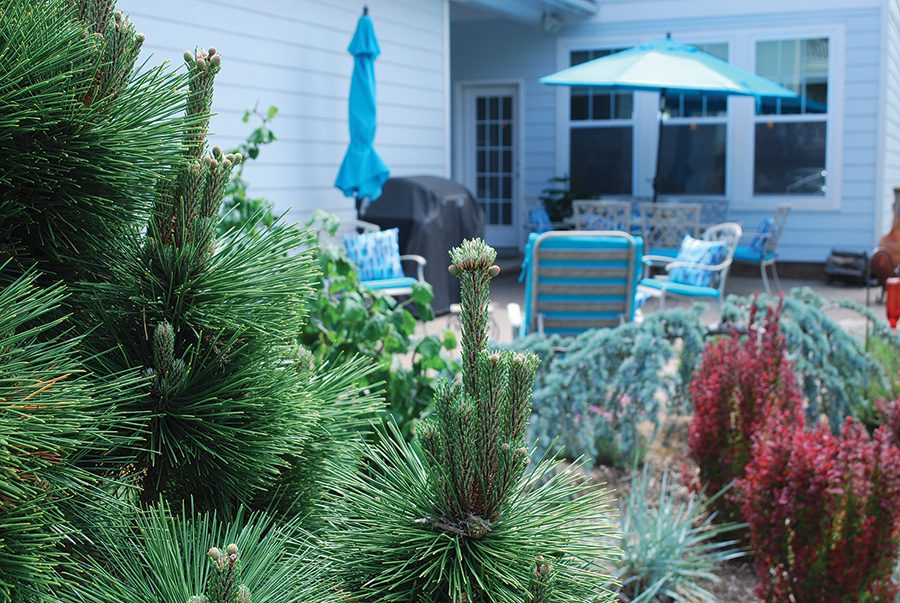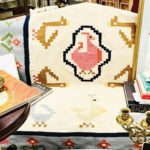How to design a small, but beautiful garden
March 30, 2023

by Jay Sifford
Property in Charlotte has become a precious commodity. As a result, many people are downsizing in order to live in their preferred parts of town. In other cases, a large house is no longer needed, and folks are feeling the need to simplify. As a child, I dreamed of living in the Biltmore House. As an adult, smaller spaces began to intrigue me.
Whether considering interior or exterior areas, small spaces can be challenging. Quality craftsmanship and materials become even more important in tight spaces because we see things up close. Additionally, small spaces generally need to be functionally flexible to allow for multiple uses. Perhaps you have downsized and, as a result, find yourself with a small courtyard or tiny corner lot and are coming up short thinking about how to transform your diminutive space into a multifunctional yet beautiful immersive garden. Fortunately, there are some design principles that can come to your rescue.


These before and after photos show the author’s new 300-square-foot enclosed courtyard. Black walls and floor neutralize the space while repeating the interior floor color. A step-up deck with a low planter adds dimension while maintaining an open feel.
Paint can cover a multitude of design sins. Many smaller spaces are bordered by several different fence styles, along with one or more materials cladding the exterior walls of the home. Such a scenario reads as disjointed and haphazard, and fights against creating a tranquil outdoor space. If possible, considering painting the different surfaces the same color. Even if you choose a bold color, the disparity will be neutralized and the effect will be a neutral palette upon which to build. If feasible, consider repeating a paint color that you have used for your interior to create a seamless, homogenous indoor/outdoor environment. If painting is not possible, tall, narrow screening plants can mask the disparity.
Consider simplifying your outdoor planting containers and furniture. Many people own a collection of outdoor pots in a myriad of colors, styles and materials. Think about replacing those mismatched pots with others of one style, color and material for a cohesive look, then vary the sizes and shapes for interest. Built-in planting troughs will simplify the look even further. Additionally, consider donating your disparate collection of outdoor furniture and replacing it with furniture of one style. Doing so will create a clean, tranquil vibe with no clutter. You can add color through cushions, art and lush plants.
Slight elevation changes can create garden “rooms” while preserving precious space. A simple 6-inch step-up can signify a change in purpose without adding walls or high partitions. I built a 6-inch-high deck on the back third of my new 300-square-foot walled courtyard to create a separate dining space. A low built-in trough planted with Carex further separates the area without compromising the open feeling. Visitors are amazed at how this actually makes the space feel larger rather than smaller. If you find yourself with a small, sloped backyard rather than a courtyard, terracing the space can greatly enhance your usable square footage.
Think of ways to keep the eye low. Eyesores such as utility poles or lines and neighboring garages that exceed the height of privacy fences are generally above eye level. Horizontal fence slats or external home cladding will keep the eye low and moving around the space, making it feel larger. Vertical fences or cladding, by contrast, will pull the eye upward. Our eyes are hard-wired to follow lines. Use this natural inclination to your advantage when designing your small space.
On a related note, when installing stepping stones in a longer, narrower space, consider using longer rectangular stone plinths laid to partially span the area. Doing so will spread the eye out, causing the space to appear wider than it is.

This garden, built on a small corner lot, lacked privacy. The planting scheme, full of interesting colors, textures and shapes, creates an immersive environment by keeping the eye low and busy.
Now let’s move on to the fun part: the plants! Plants used in a small area must bring multiseasonal interest to the space. For example, I would never use peonies in a small garden, as they bloom magnificently for two weeks then become mundane green blobs until they finally turn brown and crunchy by late summer. I would, however, use irises or Japanese maples. Even though the irises bloom for only a couple of weeks, their spiky foliage remains through the season and adds a strong, happy vertical element to the landscape. Japanese maples generally have exquisite spring and fall foliage color then provide sculptural focal points when leafless through the winter months.
Go heavy on foliage color and texture to create an immersive, tranquil garden experience. Small conifers, smaller clumping bamboos, ferns and grasses are perfect choices for integrating texture into the garden. Coleus and heucheras are indispensable when it comes to introducing bold foliage color. When choosing flowering perennials, consider those with long bloom seasons. Many of the verbenas, dianthus, Stokesia, asters, sedums, summer-blooming alliums, hardy geraniums such as ‘Rozanne,’ and coreopsis are recommended choices.
Finally, have fun creating your magical garden space. Use these design guidelines to create a unique place that is all your own. SP
Jay Sifford is a Charlotte-based landscape designer who specializes in contemporary, Asian and transitional gardens. His work has been featured in Southern Living, Country Gardens and Fine Gardening, as well as Houzz and several books.
Featured photo: This garden, designed by the author, was previously covered by inexpensive artificial turf. The redesign created an immersive, peaceful space. Wide bluestone plinths extend into the planting beds, creating continuity and interest while making the space feel wider.




